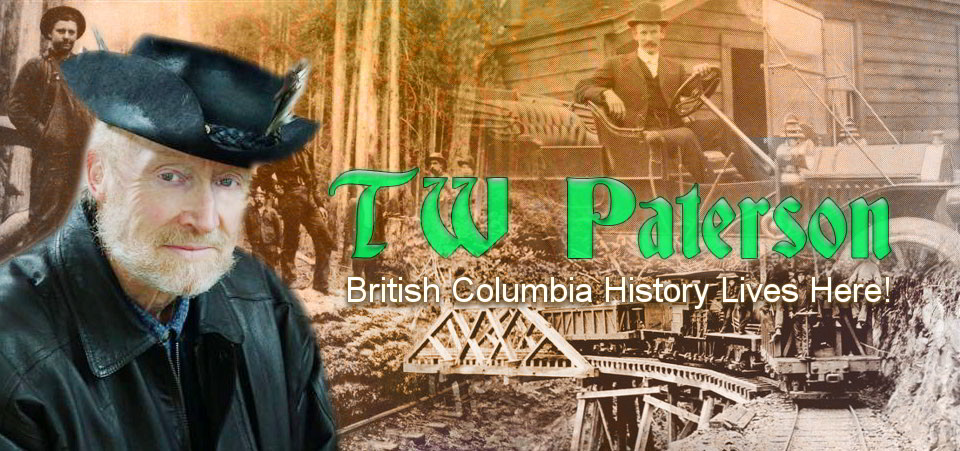Royal Roads University’s Mysterious Roland Stuart
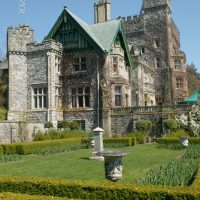
February 16, 2020
ROYAL ROADS UNIVERSITY’S MYSTERIOUS ROLAND STUART
Today we know this magnificent property beside the Esquimalt Lagoon as Royal Roads University. Its previous claim to fame was as coal baron James Dunsmuir’s Hatley Castle–as prime a waterfront estate as any man could have dreamt of, and well befitting the wealthiest man in the land.
Come to think of it, with its breathtaking views of Juan de Fuca Strait, Washington’s Olympic Range and Esquimalt naval base, it’s as classy a classroom as one could hope for, too.
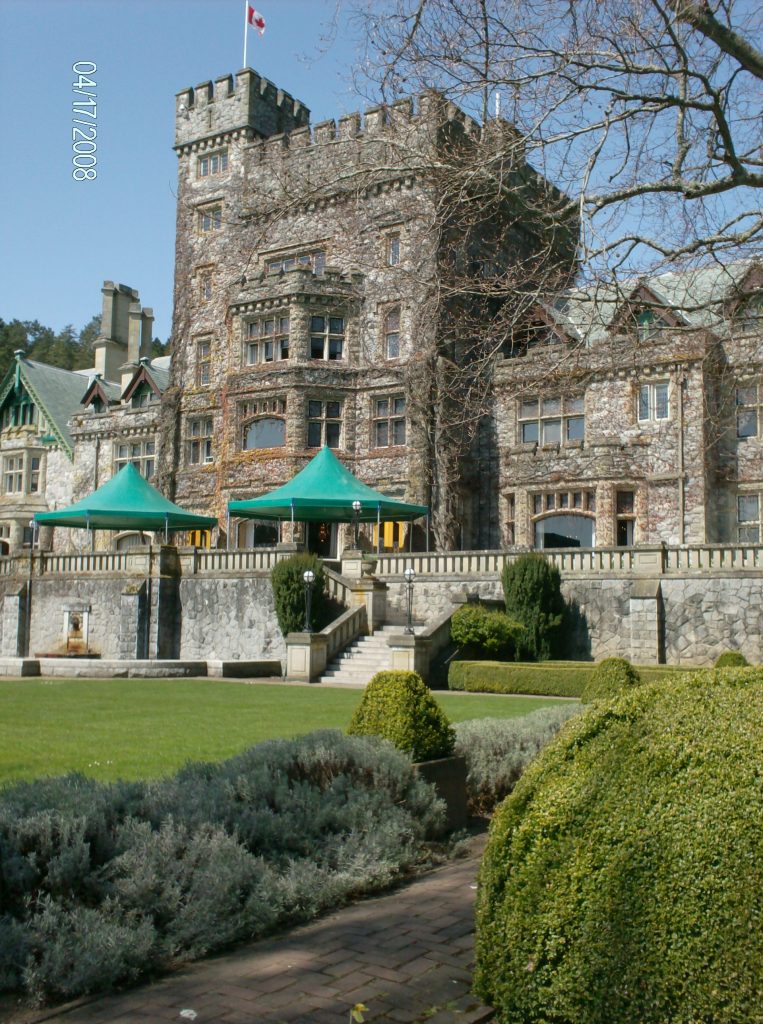
But, as Hatley Park, Colwood’s crown jewel predates James Dunsmuir, having been the private preserve of Gilzean Roland Whately Stuart, a colourful and mysterious character whose brief presence has been all but overlooked by most historians.
Born at Little Shelford, Scotland, he’s supposed to have been a twice-failed candidate for a crack British regiment (his father was a lieutenant in the famed Black Watch), although British regimental records show that a Stuart of the same singular first names, and a “gentleman,” was gazetted as a second lieutenant in the Dorset Infantry in March 1880.
Either way, our man Stuart retired to 250 waterfront acres at Colwood in 1892, having partnered with a Capt. Pearse to buy more than 500 acres known as Belmont Park. He and Pearse later split the land, the latter retaining half and the name Belmont, Stuart christening his half, Hatley Park. It’s not known what originally brought him to British Columbia, and it’s interesting to conjecture if this is the same Roland Stuart, identified only as an Englishman, who bought Radium Hot Springs from the Crown in 1890–for $160!–and retained ownership until 1922. We don’t even know why he chose to settle at Colwood.
Although nowhere near as rich as James Dunsmuir, Roland Stuart seems to have been anything but a charity case. Which raises questions as to his funding as his soldiering father is known to have died a young man and without, supposedly, leaving his heirs well off, his mother having to work “at the craft of woodcarving”.
Nevertheless, Roland had a large Tudor-style house (complete with curtains of Battenburg lace, it’s said) built to house the family treasures from the Old Country. These included hand-written manuscripts and his mother’s personal correspondence with the novelist George Eliot. Presumably, not all of these perished in the fire as they’ve since been published in book form by a Stuart descendant, also named Roland.
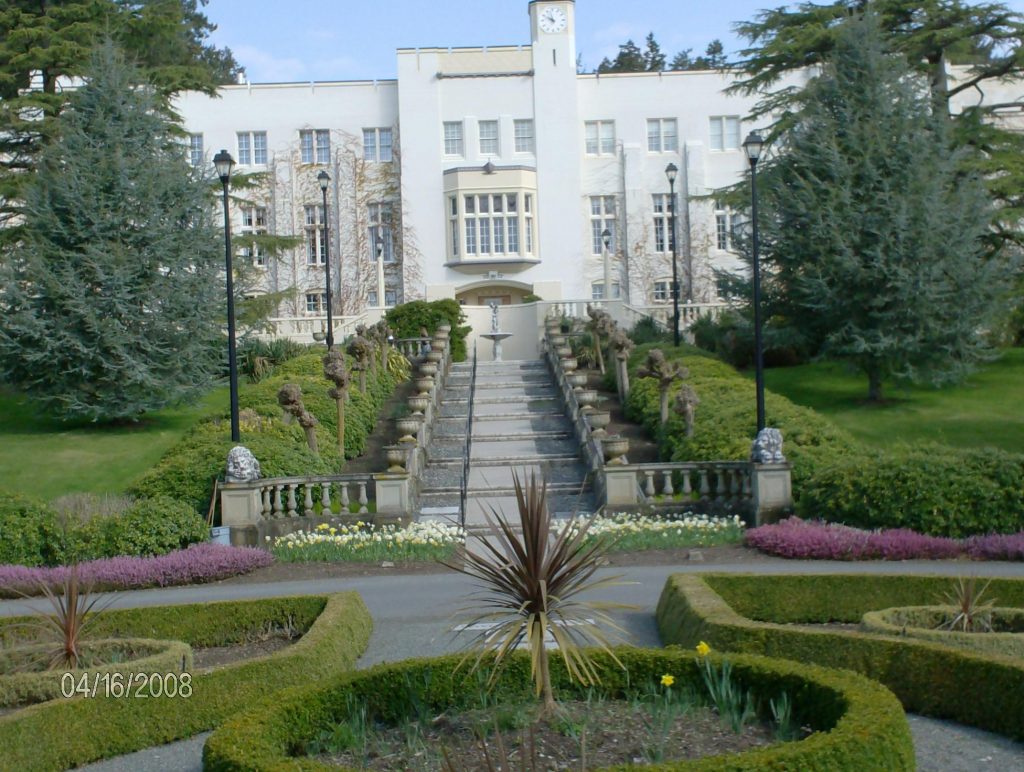
A photo that purports to be of the Roland Stuart house at Hatley must be that of a second structure as it isn’t Tudor and it isn’t grand; perhaps it was for the hired help as Stuart supplemented his means by cultivating the land, raising cattle and, supposedly, supplying ships at the nearby naval station with water. The latter simply can’t be correct as Esquimalt naval base has always had its own water sources. Surviving oil paintings of Hatley Estate during his tenure, now in possession of the provincial archives having been acquired from the Reilly family, friends of Stuart’s, do show horses, cattle, sheep, swine and poultry on the estate.
Once settled in at Hatley, the late historian Terry Reksten rudely noted, Stuart enjoyed the company of a “series” of young men. Upon his mother’s death in 1902, Stuart applied his inheritance to commissioning a tall obelisk in the “dear and most gracious memory” of Elma Stuart. Erected to her “beautiful memory” by her “dearly loved and ever loving son Roland,” it originally stood on the Hatley Estate grounds but was moved by the navy to Esquimalt’s beautiful Veterans’ Cemetery where it dominates the smaller, more austere military headstones.
A French inscription (he lived with his mother in France for a time) on one side of the monument translates as, “Women, if you would be tenderly loved, even unto death, be devoted mothers to your children.” A final, telling, line reads: “Nor ever yet was mother worshipped more.”
His mother is buried in the Old Country, it should be noted.
Roland Stuart assuaged his grief by campaigning for Premier Richard McBride and Esquimalt’s candidate for the provincial legislature then added a large wing to his mansion, only to lose it and all its precious contents, which included his fine library, rare paintings, fine furniture, silverware and antiques “precious not alone for their intrinsic value, but for the fact that they comprised a collection treasured as well for their association as works of art,” to fire three years later. The Colonist estimated Stuart’s total loss to have been “upwards” of $35,000, then a sizable sum.
Stuart was in the Old Country when the fire erupted in the kitchen area; supposedly caused by sparks from the stove, it sent the caretaker and his family fleeing with little more than the clothes on their backs.
When Stuart announced that he was returning to England, James Dunsmuir, recently retired as coal baron and soon to retire as lieutenant-governor, purchased Hatley Estate for $50,000. Dunsmuir proceeded to enlarge it to 800 acres and to build his famous castle that served as a naval college during the Second World War and, today, is a private university.
As for Roland Stuart, who has been referred to by the late historian James K. Nesbitt as a man of mystery, the only photo of him in the provincial archives shows him sitting on the veranda of what appears to be a working class house with four men, a boy and the inevitable dog. All are armed with double-barrelled shotguns. Stuart, perhaps in his early 50s, is wearing a crumpled army-style Stetson, a neatly trimmed moustache and, typical of the British gentry, all five men are well dressed and wearing ties with their high-topped boots.
When Nesbitt wrote of Roland Stuart in the Victoria Colonist in 1961, he was flooded with phone calls and letters from readers who remembered Stuart as having been particularly fond of children whom he allowed to play in his haystacks, swim in the lagoon, ride his horses and feed his livestock. He also shared his estate with gentlemen friends from the city who came to hunt and to fish.
Margaret Cooke recounted her childhood visits to the Stuart home with her father: “I cannot recall when I first heard of Mr. Stuart, but I remember so well my first visit with my father to his home. We walked the shore distance from our home to Hatley Park, through a really dense forest. The road was good and it was July. The day was hot and the shade of the tall firs very welcome. It was school holidays, I remember, and I was happy that my father took me on a visit. I know I sat in the parlour, in a chintz-covered chair, and Mr. Stuart spoke to a tall young man who disappeared, but soon returned with a tall glass of lemonade and a plate of cookies.
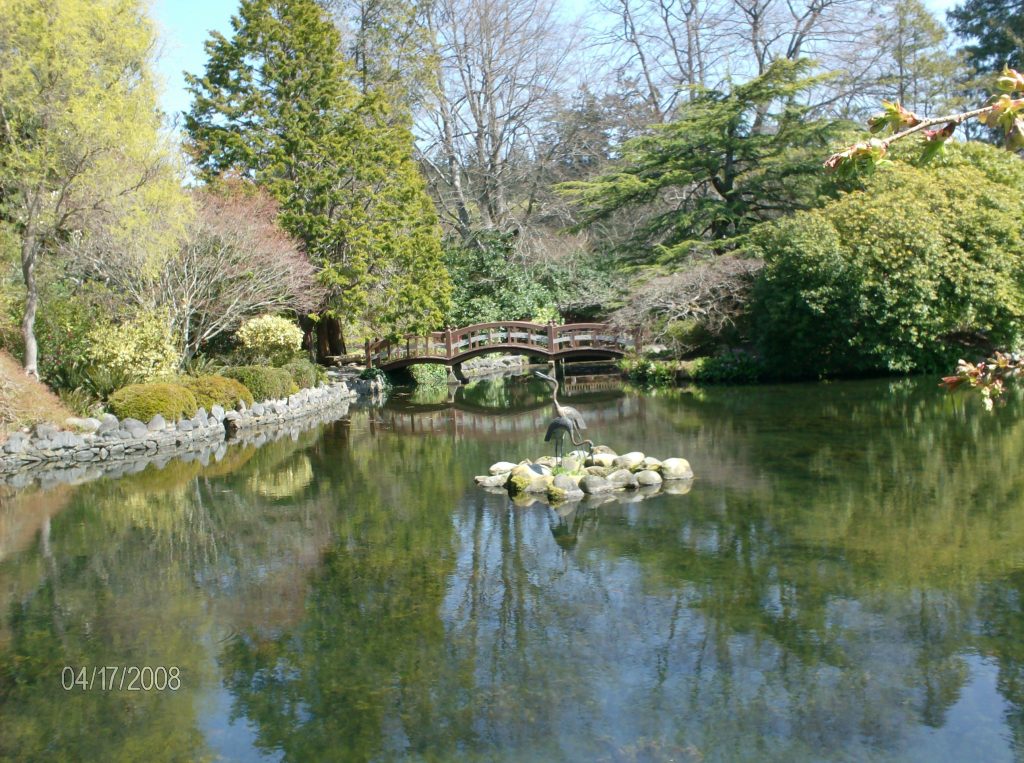
“Mr. Stuart and my father sat in wicker chairs on the veranda. I am ashamed to say I took no notice of the furnishings of the room, only the small table holding my cookies and lemonade. It was black, and carved, no doubt of ebony or some hardwood. I had been taught to be seen and not heard, not to stare, and all the things that a lady should do and not do. Each visit thereafter was a repetition of the first–lemonade, cookies and a stroll around the shrubbery.”
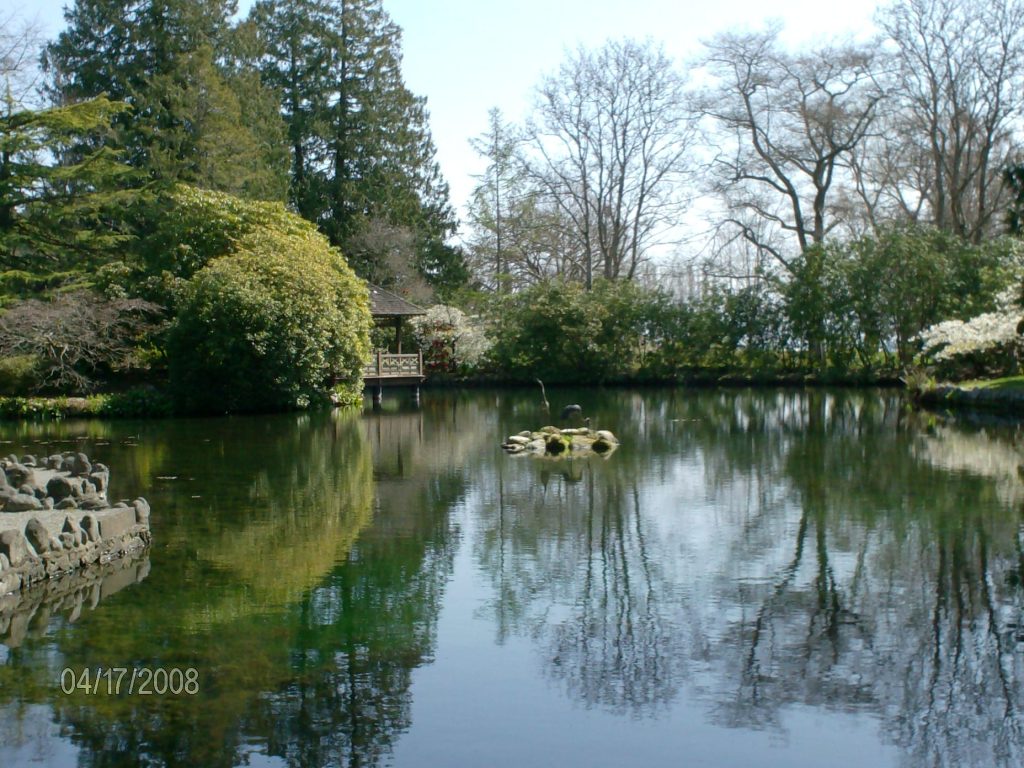
She could shed no light on Stuart’s coming to the Island, knowing only that he was “a wealthy man and travelled extensively. I remember my father coming in and announcing, ‘Mr. Stuart is off to England again,’ and so, apparently, he went quite frequently.”
She did offer interesting insight into Stuart’s fondness for children, telling how he visited the schools to speak to the students. Just before leaving on one such trip, he promised to bring every child a gift upon his return. “Needless to say,” Mrs. Cook recalled almost 70 years later, “with eager impatience [we] awaited his return. Then came the great moment…when the boxes were opened, and the first gift appeared and was handed out. I have mine today, a Royal Doulton beaker, in perfect condition, with the portraits of Edward VII and Queen Alexandra. I have been offered rather large amounts for it, but would never sell it. It is for my daughter…” The other girls received similar gifts of china, the boys Coronation pocket knives.
She last saw Stuart sometime during the early 1900s when “he visited the school to say goodbye, as he was once more on his way to England. I remember his kind admonition and smile–‘to be diligent and obedient and become proficient at any and whatever task is given you to perform’.”
Mrs. Cooke thought that “anyone who took time out to visit school children must have been a wonderfully kind man”.
The unanswered questions as to the source of Roland Stuart’s money, his choice of residence so far from England, even his reason for naming his estate Hatley, likely will never be answered although it has been speculated that its origins lie with Hatley Park in England’s Cambridgeshire; possibly this was the Stuart family’s ancestral home.
Interestingly, they wonder about him over there, too. When the Township of Hatley celebrated its 200th birthday in 1999, Isabel Beatty noted in an article in the Gaminglay Gazette,
“There is little known about Roland Stuart’s upbringing and his life before his settlement in British Columbia. What was the source of his wealth? How did he come to know of Hatley Park [Colwood]? Why did [Hatley] seem an appropriate name for his new estate and the house on which he lavished so much care?”
Well, if they don’t have the answers in Roland Stuart’s homeland, it’s unlikely that we’ll ever answer them on this side of the pond.
Roland Stuart really was a man of mystery.
* * * * * * * * * *
James Dunsmuir had the renowned Victoria architect Samuel Maclure design his 200 -foot-long castle without regard for its ultimate cost. The extensive grounds required over full-time 100 workers, most of them Chinese as had been James’s wont in his coal mines, to tend to the gardens filled with exotic, imported plants and trees, and the orchids in the conservatory.
James Dunsmuir retired in 1910 after selling his coal mines, steamships, Esquimalt & Nanaimo Railway for $11 million (a phenomenal sum) and retired to Hatley Castle, his yacht Dolaura and his fishing cabin at Lake Cowichan where, 10 years later, he died suddenly, aged 69. Many believe his death was hastened by the loss of his son, ‘Boy’ Dunsmuir in the sinking of the famous passenger liner Lusitania during the First World War.
The Canadian government acquired Hatley Park for use as Royal Roads Military College during the Second World War, using the castle as a dormitory and mess hall for cadets and staff officers until the Grant Block was completed. The castle now serves as the administrative centre of Royal Roads University. The magnificent property had even been considered for a time as a secure refuge for the British royal family had Germany succeeded in invading the British Isles as was originally feared.
With widow Eleanor’s death in 1937, the estate was purchased by the Canadian government for use as a volunteer naval officers’ training establishment. In 1942 it became the Royal Canadian Naval College, later the RCN-RCAF Joint Services College then the tri-service Canadian Services College Royal Roads and, finally, Royal Roads Military College. Closed in 1995, the B.C. government leased the property for use as a university.
Today, as Royal Roads University (www.royalroads.ca, the magnificent property is a national historic site and has been used as the setting for popular TV shows and Hollywood movies. You can learn more about this popular tourist attraction at www.hatleycastle.com.
